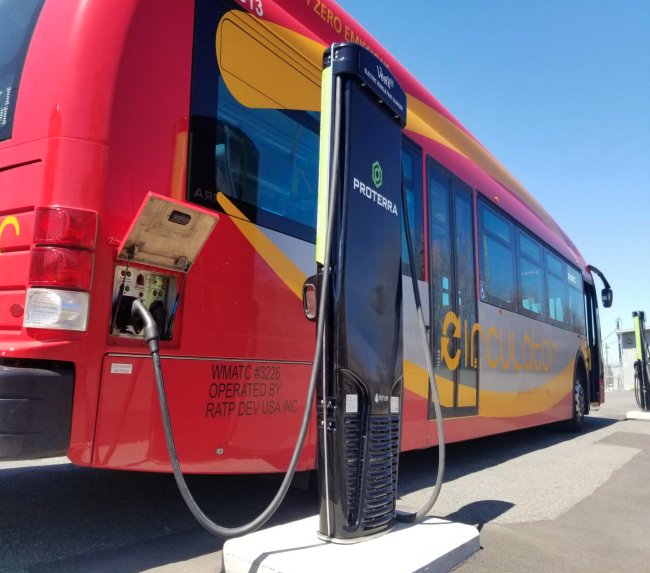The Bipartisan Infrastructure Law established the Carbon Reduction Program (CRP), which funds projects designed to reduce transportation emissions, defined as carbon dioxide (CO2) emissions from on-road highway sources. CRP projects must be identified in the Statewide Transportation Improvement Program (STIP)/Transportation Improvement Program (TIP) and be consistent with the Long-Range Statewide Transportation Plan and the Metropolitan Transportation Plan(s).
Examples of CRP Eligible Projects
| A project described in 23 U.S.C. 149(b)(4) to establish or operate a traffic monitoring, management, and control facility or program, including advanced truck stop electrification systems; | A project to replace street lighting and traffic control devices with energy-efficient alternatives; |
| A public transportation project eligible under 23 U.S.C. 142; | development of a carbon reduction strategy developed by a State per requirements in 23 U.S.C. 175(d); |
| A transportation alternative (as defined under the Moving Ahead for Progress under the 21st Century Act including, but not limited to, the construction, planning, and design of on-road and off-road trail facilities for pedestrians, bicyclists, and other nonmotorized forms of transportation; | A project or strategy designed to support congestion pricing, shifting transportation demand to nonpeak hours or other transportation modes, increasing vehicle occupancy rates, or otherwise reducing demand for roads, including electronic toll collection and travel demand management strategies and programs; |
| A project described in 23 U.S.C. 503(c)(4)(E) for advanced transportation and congestion management technologies; | Efforts to reduce the environmental and community impacts of freight movement; |
| Deployment of infrastructure-based intelligent transportation systems capital improvements and the installation of vehicle-to-infrastructure communications equipment; |
A project that supports the deployment of alternative fuel vehicles, including– Acquisition, installation, or operation of publicly accessible electric vehicle charging infrastructure or hydrogen, natural gas, or propane vehicle fueling infrastructure; and Purchase or lease of zero-emission construction equipment and vehicles, including the acquisition, construction, or leasing of required supporting facilities; |
Carbon Reduction Strategy
The CRP requires each State, in consultation with any MPO designated within the State, to develop a carbon reduction strategy not later than two years after enactment and update that strategy at least every four years. The carbon reduction strategy is required to support efforts–and identify projects and strategies–to support the reduction of transportation emissions, at the State's discretion, quantify the total carbon emissions from production, transport, and use of materials used in the construction of transportation facilities in the State; and be appropriate to the population density and context of the State, including any MPO designated within the State.
